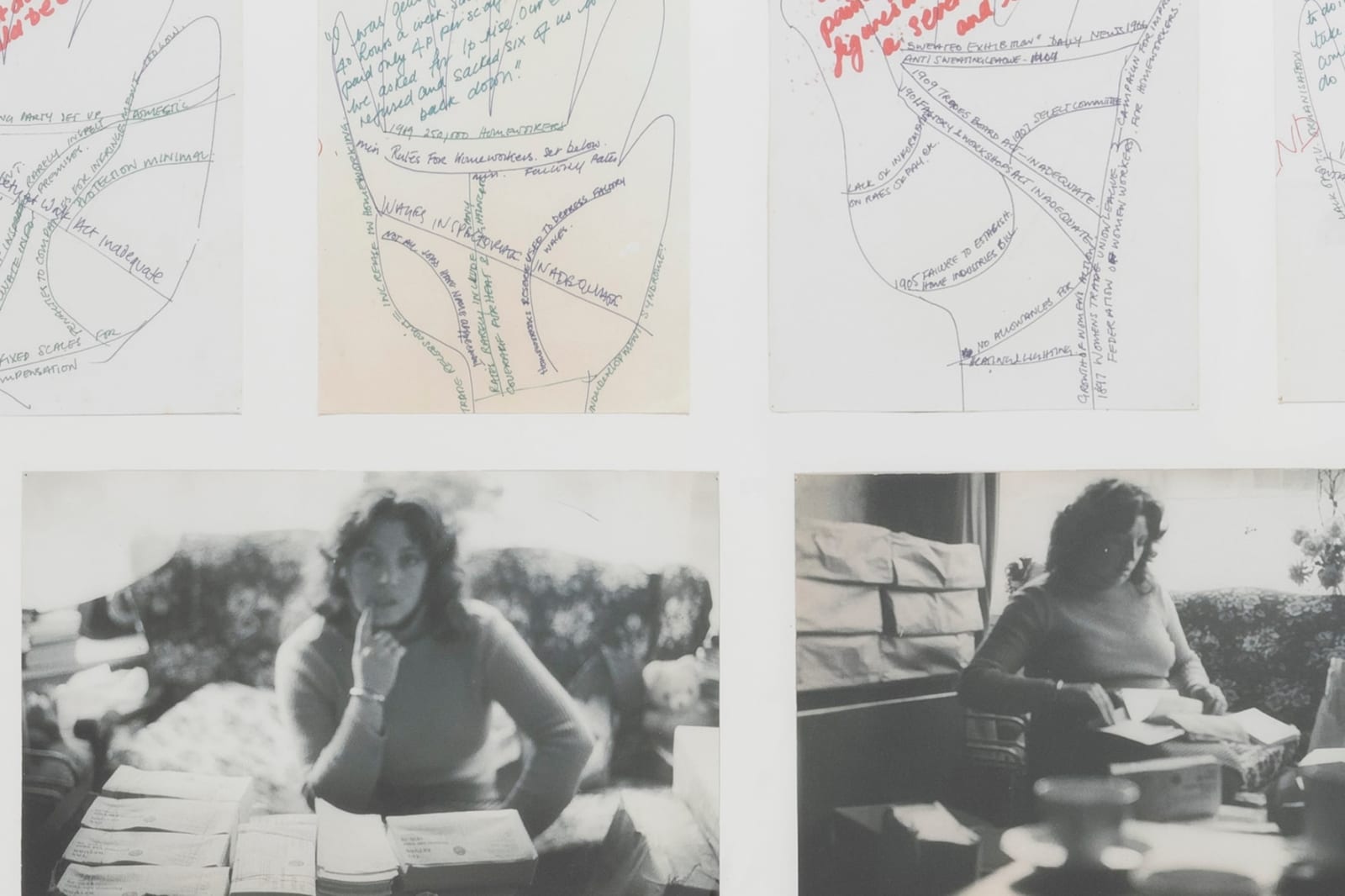Margaret Harrison England, b. 1940
Homeworkers: Mrs. McGilvrey and the hands of law and experience, 1978-1980
Pencil and ink on paper, black and white silver gelatin prints mounted on cardboard.
90 x 145 cm.
Further images
After the forced closure of her exhibition in London, Margaret Harrison turned to activism and examined the relationship between gender and class from a feminist perspective. Alone or in groups...
After the forced closure of her exhibition in London, Margaret Harrison turned to activism and examined the relationship between gender and class from a feminist perspective. Alone or in groups (with other artists such as Conrad Atkinson, Mary Kelley, and Kay Hunt), she carried out a sociological reflection on the changes in women’s working conditions in the wake of the Equal Pay Act of 1970. She interviewed and photographed women in factories, or, as in this work, in their homes, seeking to understand the difficulties they faced.
Mrs. McGilvrey was one of the workers interviewed: she assembled tax forms at home, a task outsourced by the central government and sorely underpaid. As evidenced by the excerpts from testimonies, inscribed along the palm lines on the hands outlined in the middle of the image, the situation of these women was so precarious that they had no choice but to accept these jobs, forfeited their salary if the work was late, and could be dismissed if they asked for a raise.
Mrs. McGilvrey was one of the workers interviewed: she assembled tax forms at home, a task outsourced by the central government and sorely underpaid. As evidenced by the excerpts from testimonies, inscribed along the palm lines on the hands outlined in the middle of the image, the situation of these women was so precarious that they had no choice but to accept these jobs, forfeited their salary if the work was late, and could be dismissed if they asked for a raise.








